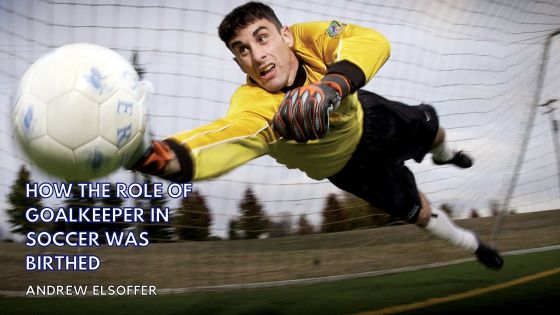In soccer, where every position contributes to the tapestry of teamwork, the role of the goalkeeper stands apart as a unique blend of skill, bravery, and tactical brilliance. As professionals in the soccer industry, we understand the significance of this position and its pivotal impact on the game.
Origins of the Goalkeeper: A Defensive Necessity
We must journey back to the game’s early days to understand the birth of the goalkeeper’s role. During soccer’s nascent years, there were no specialized goalkeepers; instead, teams relied on a collective defensive effort to protect their goal. However, as the game grew in popularity and tactics became more refined, the need for a dedicated individual to guard the goal emerged.
The Midfielder-Turned-Goalkeeper
In the late 1800s, a pivotal moment occurred when the goalkeeper position took shape due to tactical innovation. In the early days, teams often assigned the goalkeeper role to one of the outfield players. These individuals, primarily midfielders, possessed the ability to read the game, make crucial interceptions, and distribute the ball effectively.
As the game progressed and teams recognized the need for a specialist in front of the net, the midfielder-turned-goalkeeper emerged as the precursor to the modern-day shot-stopper. This transition marked the first step towards a more refined and strategic approach to the goalkeeper position.
Equipment and Evolution
The development of specialized goalkeeper equipment played a significant role in the evolution of the position. In the early days, goalkeepers wore minimal protection, leaving them vulnerable to injury. However, with the increasing pace and power of the game, it became evident that goalkeepers required additional safeguards.
The introduction of gloves, designed to enhance grip and protect the hands, revolutionized the role. This innovation allowed goalkeepers to make daring saves and acrobatic dives, further solidifying their place as the last line of defense. Over time, technological advancements led to the creation of lightweight and flexible materials, providing goalkeepers with improved mobility without compromising protection.
Tactics and Strategy
As the goalkeeper position evolved, so did the tactics and strategies employed by teams. Coaches began to recognize the importance of an organized defense and the role of the goalkeeper in orchestrating it. Goalkeepers became the eyes and ears of the team, commanding defense and communicating vital information to their teammates.
Additionally, the goalkeeper’s distribution skills became a crucial game aspect. They were no longer simply shot-stoppers but key contributors in launching counter-attacks and initiating attacking moves. With their ability to distribute the ball accurately and quickly, goalkeepers became integral to the team’s overall playing style.
Modern-Day Innovations
In recent years, the goalkeeper position has experienced further transformation, driven by technological advancements and an increased emphasis on physical attributes. Fitness and agility have become paramount, with goalkeepers honing their reflexes and explosiveness through specialized training regimens.
Additionally, the use of data analysis has revolutionized the way goalkeepers approach their craft. Advanced metrics and statistical analysis provide valuable insights into opponents’ tendencies, allowing goalkeepers to anticipate shots, position themselves optimally, and make split-second decisions.
The birth and evolution of the goalkeeper’s role in soccer reflect the game’s progression from a more straightforward pastime to a complex and strategic sport. From the humble beginnings of the midfielder doubling as a goalkeeper to the highly specialized position it is today, the role has undergone remarkable changes.

